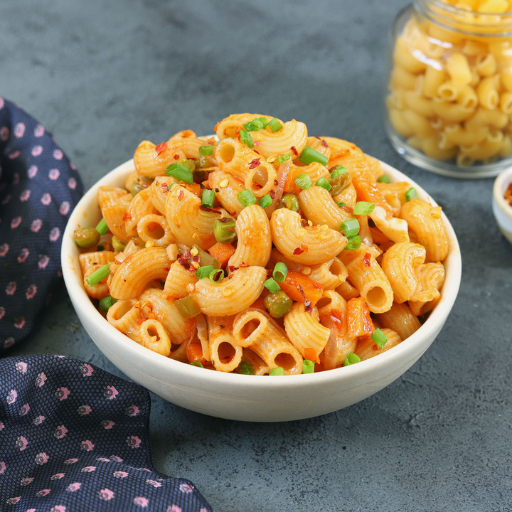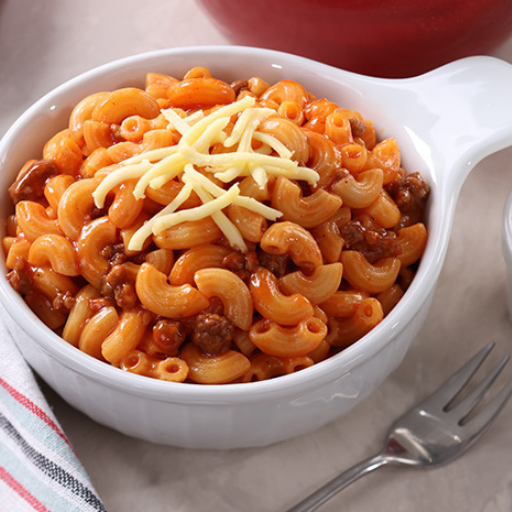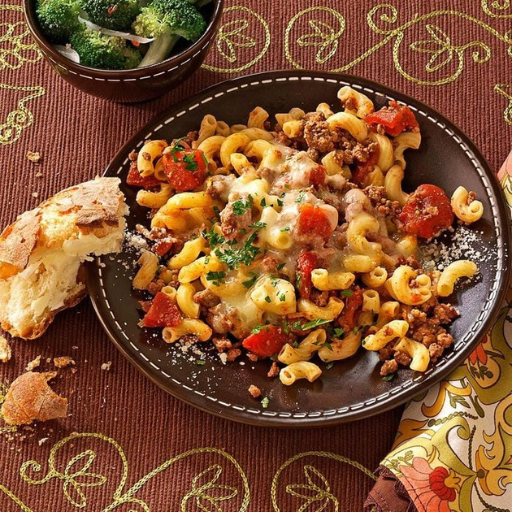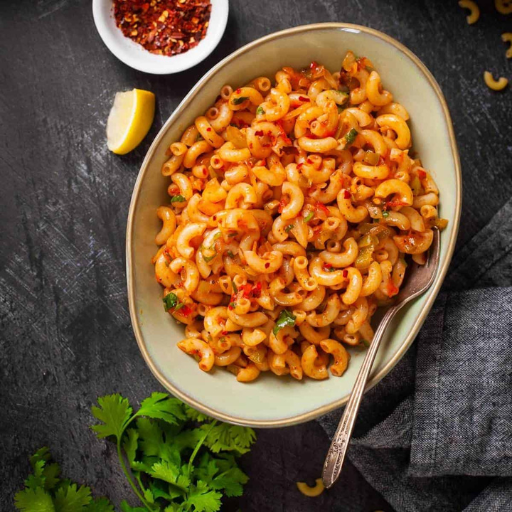Welcome to our ultimate guide on macaroni pasta recipes, where we explore the diverse and delectable world of this beloved dish. Whether you are a fan of traditional comfort foods or someone who enjoys experimenting with new culinary trends, this blog has something for everyone. From timeless classics like macaroni and cheese to inventive creations such as macaroni salads with a twist, we aim to provide you with an array of recipes that cater to various tastes and preferences. Join us as we dive into the details of each recipe, offering step-by-step instructions, tips, and tricks to help you master the art of macaroni cooking. Let’s embark on this gastronomic journey together and discover the endless possibilities that macaroni pasta has to offer!
How to Make the Perfect Macaroni Recipe
What are the Ingredients Required for Classic Macaroni?
To prepare a classic macaroni pasta dish, you will need:
- 8 ounces of Macaroni pasta: Traditional shape and texture can be achieved by going for elbow macaroni.
- 2 cups of Cheddar cheese, grated: Sharp cheddar gives it a tangy taste.
- 2 cups of milk: A creamy consistency is best suited to whole milk.
- 4 tablespoons of butter: Unsalted butter intensifies the flavour without any additional salt content.
- 2 tablespoons all-purpose flour: To thicken the cheese sauce
- 1 teaspoon salt: This should be adjusted with consideration for how salty the cheese is.
- 1/2 teaspoon black pepper: Freshly ground offers better taste
Optional add-ins may include breadcrumbs to make a crispy top or even a pinch of nutmeg for deeper flavoring.
This balance ensures that these ingredients contribute to the creaminess and cheesiness that characterizes classic macaroni. Adjustments in quantities or substitutions can be made based on individual preferences and dietary requirements.
Delicious Macaroni Cooking Steps
Boil the Macaroni:
- Bring one pot of heavily salted water (approximately one tablespoon per gallon) to boiling point.
- Put 8 ounces of macaroni pasta into boiling water and cook according to package directions, usually taking 7-8 minutes until they become al dente.
- Drain them after cooking and put aside in another container.
Prepare Cheese Sauce:
- Heat four tablespoons unsalted butter over medium heat in a medium-sized saucepan until melted fully.
- Once melted, add two tablespoons all-purpose flour into it then whisk continuously for about two minutes so as to form roux which should not brown at all.
- Continuously stirring prevents lumps from forming while gradually adding two cups whole milk; thereafter allow this mixture to cook while stirring constantly until thickened and begins bubbling around 5-7minutes later.
Add Cheese:
- Add the shredding milk mixture of two cups to low heat then incorporate cheddar cheese which is sharp.
- Keep stirring until all cheese dissolves and the sauce becomes smooth.
- Then season with salt at 1 teaspoon and black pepper at 1/2 teaspoon freshly ground as per your taste.
Combine Pasta and Cheese Sauce:
- Stir in gently cooked macaroni into the cheese sauce making sure that each noodle is coated evenly.
Optional Toppings include:
- If you want a crispy top, put the macaroni and cheese into a dish that can be used in an oven.
- It should be cooked over medium heat for about 20 minutes or till golden brown on top if sprinkled with bread crumbs and baked at 350 degrees Fahrenheit (175 degrees Celsius).
Serve and Enjoy:
- Let the macaroni cool slightly before serving it with some cheese.
- Additional depth of flavor may be achieved by adding a little bit of nutmeg or any other preferred spices on it.
Following these steps will help you achieve a deliciously creamy pasta dish characterized by traditional ingredients but rich flavors. May you adjust this recipe based on equipment or other preferences; so that your macaroni becomes perfect?
Tips to Avoid Overcooked Macaroni Pasta
Proper Cooking Time and Temperature:
- Follow the package instructions for cooking time, typically around 7-8 minutes for al dente texture.
- Use a timer to avoid overcooking: Set the timer 1-2 minutes earlier than the suggested time and check the pasta’s texture.
Use Abundant Water:
- Boil pasta in a large pot with plenty of water, ideally 4-6 quarts per pound of pasta, to ensure it cooks evenly without sticking.
Maintain a Rolling Boil:
- Keep the water at a rolling boil throughout the cooking process to ensure even heat distribution.
Stir Occasionally:
- Stir the pasta occasionally while cooking to prevent it from clumping together, especially in the first few minutes.
Rapid Cooling:
- If not serving immediately, drain and rinse the pasta under cold water to stop the cooking process instantly.
- Toss with a small amount of olive oil to prevent sticking if it will be set aside before adding the sauce.
By adhering to these guidelines and adjusting the technical parameters according to your equipment and preferences, you can consistently achieve perfectly cooked macaroni every time.
What Are the Best Macaroni Salad Recipes?
How Can I Vary My Macaroni Salad for a Healthier Meal?
To create a healthy macaroni salad, try out these quick, nutritious variations:
Whole Wheat Pasta:
- Exchange the refined pasta with whole wheat macaroni. Whole wheat pasta has more fiber and nutrients that make you feel full for longer and supports digestion.
Yogurt Dressing:
- Substitute mayo with Greek yogurt to decrease calories and add extra protein. It gives the dressing a creamy texture and tangy taste without the fat content of mayonnaise.
Veggies Galore:
- Put a variety of veggies into your salad such as bell peppers, cherry tomatoes, cucumbers, carrot sticks, red onions. The vegetables will supply vitamins, minerals and antioxidants making it healthier and more satisfying.
Lean Proteins:
- Include lean proteins like grilled chicken breast or tuna fish or tofu if you are vegetarian. This way you can have the whole meal in one plate without many calories.
Healthy Fats:
- Besides avocado slices there are also nuts and seeds such as chia or sunflower seeds which you can sprinkle on your salad. These include the good fats that keep us fuller for longer while offering our bodies essential nutrients.
All these varieties can be brought together to produce a tasty healthful macaroni salad that fits with your personal preferences on dieting as well as meeting nutrition goals.
How To Make A Tasty Vegetarian Pasta Salad
Creating an appetizing vegetarian pasta salad is not difficult at all! Follow these simple steps & technical parameters for an amazing outcome:
Choose Your Pasta Carefully:
- Go for rotini or farfalle or penne which go well with salads dressings along with other additions since they do not break easily.
- Technical Parameter: Aim to measure 8 ounces (approximately 227 grams) per normal serving of salad.
Boil Pasta Correctly:
- Cook the pasta until al dente by following instructions given about boiling in salted water. This usually takes 7-10 minutes.
- Technical Parameter: Ensure this is not overcooked so that it doesn’t become mushy.
Prep Your Vegetables:
- Dice and chop fresh bell peppers, cherry tomatoes, cucumbers, red onions, and carrots.
- Technical Parameter: Balance the pasta with around 2 cups of mixed vegetables.
Add Some Proteins:
- Have some plant-based proteins like chickpeas, black beans or tofu if you are a vegetarian.
- Technical Parameter: For it to be satisfyingly nutritious, add about one cup of protein into it.
Make The Dressing:
- Create a vinaigrette using olive oil, vinegar, mustard, garlic, salt and pepper. To make the dressing mix together three parts oil and one part vinegar in a ratio of 3:1 respectively.
- Technical Parameter: Make a large salad by mixing 1/3 cup olive oil & 2 tablespoons vinegar
Mix And Cool It:
- Mix the cooked pasta with veggies and proteins by tossing it all in the dressing. Refrigerate for at least half an hour after covering to allow flavors to blend together properly.
- Technical Parameter: Chill until at least 40°F (4°C) for both food safety & enhanced flavor infusion.
Finish With Fresh Herbs:
- Sprinkle with basil leaves or parsley/coriander before serving as garnish.
- Technical Parameter: Boost your taste buds by just including about quarter cup of fresh herbs here!
Follow these steps and parameters to create not only tasteful but also nutritious vegetarian pasta salad. In this cooking exercise you can be sure that every single ingredient contributes towards comprising full-bodied meal which will satisfy your hunger pangs.
What Goes Into a Tasty Macaroni and Cheese?
Main Ingredients for Preparing Macaroni and Cheese
To create a tasteful and comforting macaroni and cheese, you should include these vital ingredients:
- Pasta: Traditionally, elbow macaroni is the most commonly used type, but some other pasta shapes such as shells or cavatappi can also be used.
- Cheese: Combining several cheeses often gives better results. Strong cheddar has a powerful flavor which is typical while Gruyere, Monterey Jack or mozzarella etc. add meltability and creaminess.
- Milk and/or Cream: Whole milk or heavy cream is essential to get creamy sauce. You may find many recipes using both of them.
- Butter: It is necessary because it helps in preparing roux that forms the basis of cheese sauce.
- Flour: When mixed with butter, this thickens the sauce through the process of making a roux.
- Seasonings: Usual seasonings are salt, black pepper and a pinch of nutmeg. Some may also use mustard powder or garlic for added depth in their cooking procedures.
- Breadcrumbs (Optional): The crunchy breadcrumb topping made by mixing in melted butter and sometimes additional grated cheese can give texture to this dish as well as presentation.
Combining these ingredients correctly will result into perfectly creamy, luxurious macaroni and cheese that hits taste buds with flavors they crave for!
Making A Cheesy Sauce That Is Creamy
One of the key steps in making perfect macaroni cheese is creating a creamy cheesy sauce. Go through these steps for richness and flavor within your sauce:
- Make Roux: Melt butter in a saucepan over medium heat; add flour stirring continuously until smooth paste forms then cook roux for approximately 1-2 minutes without browning it.
- Add Milk: Gradually pour milk/cream into pan while whisking to avoid lumps forming; continue cooking while stirring till mixture turns thick enough to bubble slightly.
- Cheese: Once the heat is low enough, start adding shredded cheese in small amounts at a time, stirring until it melts and is thoroughly blended into sauce for smoothness.
- Seasoning Sauce: Add salt, pepper or other seasonings like nutmeg or mustard powder to taste; mix well to ensure even flavour distribution.
- Mix with Pasta: Pour this creamy cheese sauce on the cooked pasta coating all the pasta. To get crunchy topping, bake in case you want by putting mixture in baking dish and sprinkling breadcrumbs on top then bake till golden brown.
By following these steps you will have created a tasty cheesy sauce that serves as the soul of delicious macaroni and cheese recipe.
How to make perfect Macaroni & Cheese
Making perfect macaroni and cheese involves close attention throughout the entire process from picking out ingredients to presenting the finished dish. Consider these factors and parameters when preparing this dish:
Right Type of Pasta:
- Type: The original ones are elbow macaroni though any short pasta such as shells or cavatappi can be used too.
- Cooking Time: Boil the pasta just till al dente (usually 7-8 minutes according to package cooking instructions). Overcooking results in mushy macaroni and cheese.
High Quality Cheese Selection:
- Variety: The indispensable one is sharp cheddar but it could be more cheeses e.g Gruyère, gouda or parmesan among others
- Quality of Cheese: For a rich flavor and creamy texture, choose full fat high quality cheeses.
Perfecting The Cheese Sauce:
- To Ensure That Your Roux Preparation Is Neither Undercooked (It Will Taste Like Flour) Nor Overcooked (It Will Brown And Distort Its Flavor).
- Room Temperature Milk: Using milk or cream that is not cold will make it blend better with the roux.
- Milk Addition: When adding cheese, do so slowly over low heat to avoid curdling and ensure no lumps in the sauce.
Seasoning and Flavor Enhancements:
- Primary Seasonings: Salt and fresh ground pepper are a must-have for this dish.
- Other Spices: A little bit of nutmeg or a drop of dry mustard can raise its taste experience..
Baking Parameters (Optional):
- Baking Pan: The baking pan should be well greased to cook uniformly.
- Crispy Topping: Top up with buttered bread crumbs before placing in an oven set at 375°F (190°C) for 20-25 minutes until the top turns golden brown.
These guidelines are useful when making perfect macaroni cheese as it ensures every time you prepare it, you have a creamy delicious comfort food.
How to Cook Macaroni Pasta with Different Shapes and Sizes?
Ways in which to Choose the Best Macaroni Type for Your Dish
The texture and taste of your dish can be significantly affected by choosing the right macaroni. Below are a few tips and technical parameters to consider:
Classic Elbow Macaroni:
- Suitable For: Traditional macaroni and cheese, casseroles.
- Whys: Its stubby curved shape holds cheese sauce well, thus giving each spoonful a creamy tang.
Conchiglie (Shells):
- Suitable For: Dishes having chunky sauces as well as soups.
- Reasons Why: This shell shape traps bits of meat, vegetables, or thick sauces inside that burst out with flavor when you take a bite.
Penne:
- Best For: Baked dishes, pasta salads.
- Why it is best for this purpose?: The tubular shape with ridges helps hold onto thicker sauces while still keeping an al dente texture.
Rotini (Spirals):
- For Pasta salads light tomato sauces.
- Why this one?: It catches and holds on to oil based or light tomato sauces ensuring every bite has maximum taste impact due to its spiral shape.
Cavatappi (Corkscrews):
- What it’s good for is robust cheese sauces baked macaroni and cheese.
Why I chose this kind of pasta tubules?
- It is because the curly ribbed texture provides a more solid surface upon which the sauce will cling offering the ultimate satisfaction in biting coupled with richness in flavor.
Technical parameters needed for optimal texture
- Cooking Time: Each type should be cooked according to its package instructions typically spanning 7-12 minutes,
- Water Ratio: To prevent sticking use at least four to six quarts of water per pound of pasta
- Salt Add 1 or 2 tablespoons salt in boiling water so as to enhance natural flavoring of pasta.
By considering these factors, you can select the perfect macaroni shape to complement your dish, enhancing both its texture and taste.
Some Cooking Tips for Elbow Macaroni and Different Pasta Shapes
Proper Boiling:
- Use Enough Water: Be sure to have a big pot with at least two to three gallons of water per pound of pasta to avoid sticking.
- Add Salt: Make more tasty 1-2 tablespoons of salt to boiling water before adding the pasta.
- No Oil: Putting oil in the water does not make sauce stick better on the pasta; only salty water is needed.
Al Dente Perfection:
- Follow Directions: For al dente texture, cook pasta according to package time which should be between 7 and 12 minutes.
- Check for Doneness: Start tasting the pasta about one minute before recommended cooking time to achieve desired texture (doneness).
Post-Boiling Care:
- Keep Pasta Water: Keep a cup of starchy cooking liquid before emptying the pan which can be used in sauces for added flavor and thickness.
- Draining Out Using a Colander for removal but no washing. This removes starch that helps sauce adhere to noodles.
Saucing Techniques:
- Mix Right after you drain your macaroni mix your noodles through it so that your sauce will sink down well as you also enhance its taste through absorption by them.
- Change Consistency: And if the sauce gets too thick slowly add in some reserved past water until consistency gets back right there.
Serving Suggestions:
- Serve Hot Instantly serve pasta dishes because they have best textures as well as consistency of sauces when still under warm conditions (right after cooked).
- Garnishes Add freshly grated cheese, fresh herbs or drizzle olive over it just for more flavour and looks.
By adhering to these guides every time you prepare macaronis and other shapes of pastas, you can cook perfect food that tastes good and has nice feel inside mouth too.
Common Mistakes to Avoid When Cooking Macaroni
- Overcrowding the Pot: Avoid cooking too much pasta in a small pot, as this can cause the pasta to stick together and cook unevenly. Always use a large pot with plenty of water.
- Adding Oil to the Water: While it might prevent sticking, adding oil to the cooking water can also prevent the sauce from adhering well. Stick to just salted water.
- Overcooking the Pasta: Cooking pasta for too long results in a mushy texture. Aim for an al dente finish, where the pasta is firm to the bite. Follow the package instructions and start checking for doneness a minute or two before the suggested time.
- Rinsing the Pasta: Rinsing pasta washes away the starch that helps the sauce cling to the noodles, leading to a less flavorful dish. Only rinse pasta if you are using it in a cold salad.
- Not Mixing with Sauce Immediately: Letting pasta sit after draining can make it clump together. Always mix pasta with the sauce right after draining to keep it well-coated and flavorful.
Why Are Macaroni Recipes So Popular in Italy?
Historical Origins of Macaroni in Italy
Macaroni, as a specific category within the larger category of pasta, has a long history rooted in Italian cuisine. It is believed that pasta originated from ancient Rome where “lagana” (similar to modern-day lasagna) was consumed. By the time 13th century set in, macaroni had become an integral part of Italy’s food culture mainly in its southern parts where durum wheat thrived.
In fact, there was a significant boost to the popularity of macaroni due to the introduction of mechanical pasta-making process during Renaissance era. For instance, this period saw establishment of pasta factories especially around Naples that concentrated on dried varieties including macaroni and were available all year round.
Technical Parameters and Justifications:
- Durum Wheat Semolina: Durum wheat semolina is usually used to make macaroni because it has enough gluten needed for firm or resilient pasta that holds shapes well.
- Extrusion Method: Macaroni is traditionally extruded through bronze or Teflon dies where they give it a roughened texture which helps sauce attach properly while others make smoothness to them as possible as can be.
- Drying Process: After being formed into different shapes, macaroni goes through drying procedure under certain conditions. In order to maintain texture and flavor traditional drying takes place slowly at low temperatures whereas these days drying occurs in temperature-controlled rooms leading to uniformity and efficiency.
The merging together between cultural heritage and technological advancements have ensured that macaroni remains popular among Italians, being known for its adaptability and distinctive consistency.
Why Italian Macaroni Recipes Are So Loved Worldwide
This means that Italian pasta dishes are highly authentic and timeless with rich culinary traditions behind them appealed to many people. Secondly, the inclusion of high-quality ingredients especially durum wheat semolina makes macaroni taste good and feel great when eating it as well. Lastly, specific pasta-making techniques like extrusion method as well as controlled drying processes make macaroni unique in its characteristics enabling it to go with different sauces and ingredients.
Technical Parameters and Justifications
- Durum Wheat Semolina: The macaroni is made from durum wheat semolina that has high gluten content which gives it a firm texture making it hold shape when cooked.
- Extrusion Method: The type of dies used in the extrusion process determines the type of surface texture that is found on the pasta with bronze dies providing a rougher one enhancing the adhesion of sauces.
- Drying Process: Preservation of flavor and texture is targeted by both traditional and modern drying methods. Traditional means involve slow drying at low temperature in cool room while modern approaches employ temperature-regulated environments for uniformity.
In conclusion, global love for Italian macaroni recipes comes from aspects such as historical authenticity, better ingredients, and accurate manufacturing approaches.
Reference sources
-
Dinner in 321: Best Macaroni Salad
-
Taste of Home: 29 of Our Best Macaroni Salad Recipes
-
Southern Bite: Classic Macaroni Salad
- Southern Bite features a nostalgic and authentic recipe for classic macaroni salad, emphasizing its role as a staple at Southern potlucks. The detailed instructions and educational approach make it a trustworthy source for readers seeking both traditional and innovative pasta salad recipes.
- Read More3
Frequently Asked Questions (FAQs)
Q: Best way to make a classic macaroni pasta salad
A:To make a classic macaroni pasta salad, cook elbow macaroni until al dente, cool it under tap water and mix with minced onion, green peas, tomato ketchup and small amount of sugar. Adjust the salt and pepper seasoning to taste if you want; then refrigerate before serving as an invigorating lunch.
Q: What are some creative macaroni pasta salads to try?
A: Tossing diced apples into a macaroni pasta salad dish is one of the most exemplary approaches. A light vinaigrette and peas may be used in creative recipes for macaroni salad. You can also add some dairy like feta cheese or go for more exotic tastes flavored by Indian spices and chopped onions among others.
Q: How should I rate different macaroni pasta recipes?
A: The score that you give for each recipe depends on the taste, how easy it was prepared, availability of ingredients, general opinion about its consumption though there are some factors to consider as inquiries on yelp sites reading through reviews or watching youtube videos.
Q: Are there any macaroni pasta recipes suitable for a quick and easy dinner?
A: Yes, there are many quick and easy dinners ideas that you can prepare using elbow macaronis as your base. Macaroni noodle soup is such a simple dish which requires chopping onions first then adding carrots together with peas just a few other vegetables. Cook the mixture until all the vegetables are tender; finally add salt plus pepper.
Q: Can I use different pasta shapes like penne or pipette in macaroni dishes?
A: Sure! Elbow-shaped ones we know traditionally from our childhoods aren’t only type you can use here but when making unique combinations with vegetable salads or tomato-based sauces – penne, pipettes etc.
Q: How can I add a spicy twist to my macaroni pasta dish?
A: Consider adding some red chili powder or red chillis while preparing your macaroni pasta for a spicy kick. You can also put in chili flakes to make it hotter. For a full-bodied flavor combine with tomato-based sauces.
Q: What is the best way to make a classic macaroni pasta salad?
A: A classic macaroni pasta salad can be prepared by boiling elbow shaped pasta until tender yet chewy, rinsing it under cold water and combining with finely chopped onions, green peas, tomato sauce and a little sugar. You can add pepper and salt as you like; after that refrigerate prior to serving for lunch that will cool your mouth after work.
Q: Are there any macaroni pasta recipes that originate from Chinese cuisine?
A: Even though this is not traditional of the Chinese menu, other methods of preparation may bring out certain Asian elements. One idea would be taking an oriental approach where you have soy sauce, sesame oil and cut-up vegetables. Also available is Chinese inspired macaroni soup which may be delicious.



















